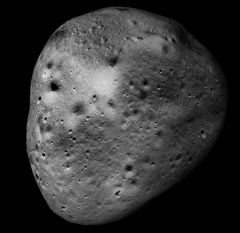| Nix
|

|
| Nix from Pluto and Moons.zip and New Horizons Pluto Encounter.zip in Orbiter 2016 with D3D9
|
| Designation
|
| Name |
Nix
|
| Reference body |
134340 Pluto
|
| Number of satellites |
|
| Planetary mean orbits
|
| Epoch |
2002.88980151
|
| Semimajor axis (a) |
48675632.9954863 m
|
| Eccentricity (e) |
0.00234038088321686
|
| Inclination (i) |
0.099795671104449°
(0.00174176304001 radian)
|
| Longitude of the ascending node (LAN, ☊) |
69.4638066817142°
(1.21237213756475 radian)
|
| Longitude of periapsis (ϖ) |
352.849909223032°
(6.15839268130502 radian)
|
| Mean longitude (L) |
259.989909223073°
(4.5376799379038 radian)
|
| Selected physical parameters
|
| Mean radius |
39779.1249275208 m
|
| Mass |
2.90032702909292×1017 kg
|
| Sidereal rotation period |
2286523.94967042336 sec (26.4644 days)
|
| SidRotOffset |
0
|
| Obliquity |
96.145° (1.67804680932995 radian)
|
| LAN |
43.046° (0.7512944298135 radian)
|
| Note |
*Elements given are from Nix.cfg (PlutoandMoons.zip)
|
Nix is a natural satellite of Pluto. It was discovered in images by the Hubble Space Telescope in May 2005 and was named after Nyx, the goddess of the night in Greek mythology.
Nix in Orbiter
Nix was introduced to Orbiter with the release of Nix-Hydra.zip in August 2009.
Gallery
Nix from Nix-Hydra.zip in Orbiter 2006P1
Nix from PlutoandMoons.zip in Orbiter 2006P1
Nix from Pluto and Moons.zip and New Horizons Pluto Encounter.zip in Orbiter 2016 with D3D9
Image of Nix from the New Horizons spacecraft taken July 2015
from Wikimedia Commons
Pluto and three satellites taken by Hubble
from Wikimedia Commons in 2005
Animation of the moons of Pluto (Pluto white, Charon blue, Styx green, Nix magenta, Kerberos cyan, Hydra red)
from Wikimedia Commons







